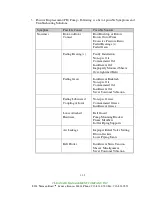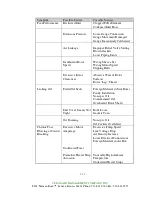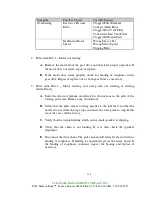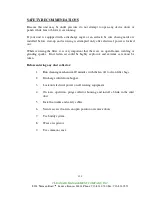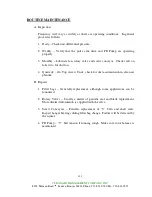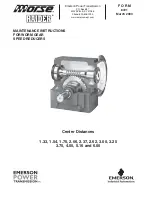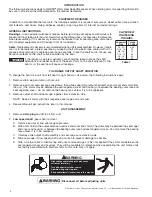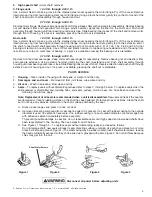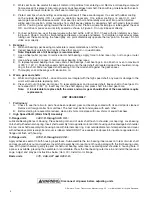
CLEAN AIR MANAGEMENT COMPANY, INC.
8224 Nieman Road
i
Lenexa, Kansas 66214 Phone: 913-831-0740 Fax: 913-831-9271
TROUBLESHOOTING THE DUST COLLECTOR (continued)
Visually inspect the bags for heavy caking; if caking is evident, see the
note below and take the necessary action to clean the bags. Next,
measure the main airflow with a pitot tube or equivalent devise and
compare with the original volume for which the unit was designed. If
the flow is too high, cut back the main fan to prevent a recurrence of the
problem.
3. Particle Size and Dust Load
If possible, compare the dust particle size and loading with the original
design specifications. Finer dust may cause a higher pressure drop. Do
not hesitate to call the factory; we have experience with many kinds of
dust.
4. Bags Too Tight
Bags that have shrunk on their cages may not flex sufficiently during the
compressed air pulse to loosen caked dust. If the bags were cleaned or
laundered, pull a bag tight around its cage; you should be able to
“gather” a small fold of material between your fingers.
5. Water Leaks
Inspect the dust collector housing and ductwork for holes, cracks, or
loose gasketing where water could enter the collector.
6. Condensation
If moisture has been condensing inside the collector, check the dew
point temperature of the incoming air stream. If may be necessary to
insulate the collector and/or the ductwork leading to the collector to keep
surface temperatures above the dew point and prevent condensation of
the filter bags.
NOTE
: Collectors that have had blinded or caked bags can possible be
put into service by running the pulsing air system for 15 to 30 minutes
without the main fan or blower. If the pressure drop is not lower when
the main fan is started again, take the bags out of the collector and
remove the caked dust by special dry-cleaning. Information pertaining
to filter bag cleaning may be obtained by calling your CAMCORP sales
representative.
10-2



















